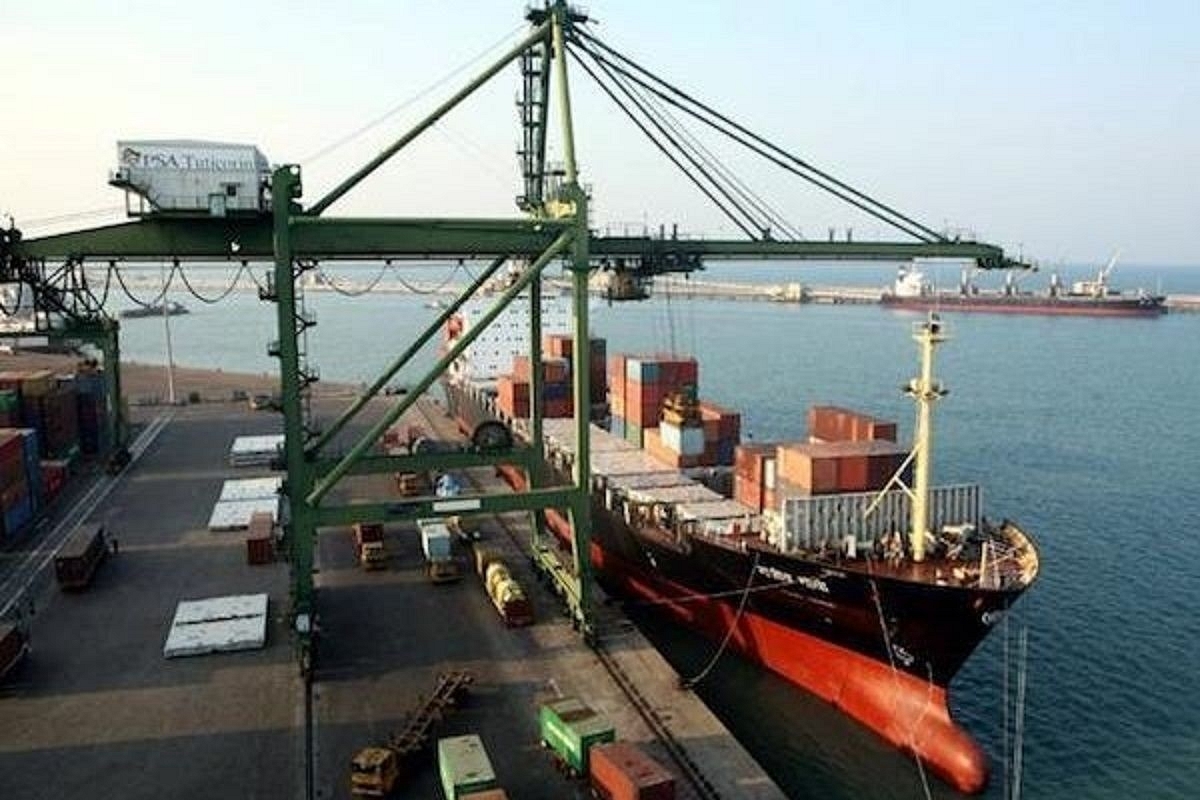Infrastructure
Tamil Nadu: VOC Port To Collaborate With IIT Madras To Create AI And Machine Learning-Based Functions To Improve Efficiency

A View of Tuticorin Port (Pearljose/Wikimedia Commons)
To improve operational efficiency and convenience of doing business at the port through data science and related technologies, VO Chidambaranar Port Trust, Tuticorin, roped in IIT Madras to create two artificial intelligence/machines learning-based functions: prediction and anomaly detection.
It is a first-of-its-kind endeavour by an Indian port that reinforces technology's role in enhancing efficiency and productivity.
The vessel turnaround time (VTT) and dwell time (DT) metrics will measure the proposed functionalities' application to two stages of the port's operations: in the sea and on land. The two aspects represent port's effectiveness.
Vessel turnaround time and dwell time are influenced by many factors, including cargo type, weather, ship size, the quantity of cargo to be unloaded, existing traffic jams, the land distribution route, potential customs issues, trucking gate routine and so on.
An average turnaround time for a container ship at VOC Port is 20 hours. Scheduling at a port is one of the significant delays that take place during a ship's entire voyage. Pre-berthing delays happen when a ship must wait for the docks to be free before unloading or loading its cargo or while waiting for a pilot and tug to pull it in.
Similarly, a high dwell time results in longer lead times for exporters and delays in the importer obtaining goods, which result in capital lockup.
It raises the cost of doing business, which has two effects: either it reduces profitability if the price is absorbed or devalues the port as a channel when the cost is passed on to the customers.
According to a proposal by the Robert Bosch Centre for Data Science and Artificial Intelligence (RBCDSAI) at IIT Madras, "A low VTT is, arguably, the most crucial incentive a port can offer to a shipping line, "reports Economic Times.
The insights are obtained through careful exploratory analysis of historical data provided by the ports. It can aid in determining the vital operational parameters influencing VTT and DT
The prediction engine and anomaly detection map are separate sets of port-level interventions. But complement port-level interventions.
Both modules will use various input features, including the cargo type, volume, vessel parameters, berth parameters, allotted cranes, truck gate protocols, truck assignment, etc.
The prediction engine contributes to a systemic understanding of the factors that influence VTT and DT, as well as the magnitude of their influence. A prediction engine can help by estimating the time required at each stage. It can be used to plan capacity.
The detection of anomalies enables intervention on a case-by-case basis. A series of steps or operations, each with a concrete marker, contribute to VTT or DT.
The framework devised in the prediction engine can be used to forecast the time required.
"Overall, the use of these two AI/ML engines will contribute to actionable insights and prescriptive policies," IIT Madras mentioned in its proposal.
Thoothukudi's VOC Port
The VOC Port, formerly Tuticorin Port Trust, is one of India's 13 major ports and is Tamil Nadu's second largest port. It is an artificial and all-weather port.
It is on India's South-Eastern coast, close to the East-West International sea routes. It is in the Gulf of Mannar, with Sri Lanka to the south and India's vast landmass to the west, and is well protected from the fury of storms and cyclonic winds.
The port is an artificial harbour protected by two breakwaters connected to deep water by a dredged channel. The port has a handling capacity of around 70 Million Tonnes per annum (MTPA) with 16 berths, including two container berths.
The port has recorded consistent growth in container traffic in recent years. In the last four years, 2017-18, 2018-19, 2019-20 and 2020-21, VOCPA handled container traffic of 6.92 lakhs TEUs, 7.39 lakhs TEUs, 8.04 lakhs TEUs and 7.62 lakhs TEU, respectively.
Support Swarajya's 50 Ground Reports Project & Sponsor A Story
Every general election Swarajya does a 50 ground reports project.
Aimed only at serious readers and those who appreciate the nuances of political undercurrents, the project provides a sense of India's electoral landscape. As you know, these reports are produced after considerable investment of travel, time and effort on the ground.
This time too we've kicked off the project in style and have covered over 30 constituencies already. If you're someone who appreciates such work and have enjoyed our coverage please consider sponsoring a ground report for just Rs 2999 to Rs 19,999 - it goes a long way in helping us produce more quality reportage.
You can also back this project by becoming a subscriber for as little as Rs 999 - so do click on this links and choose a plan that suits you and back us.
Click below to contribute.
Latest